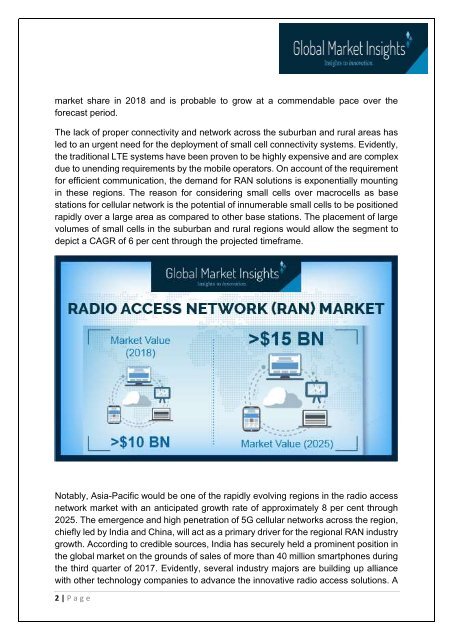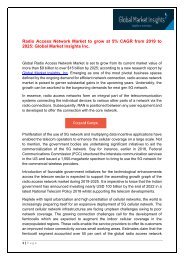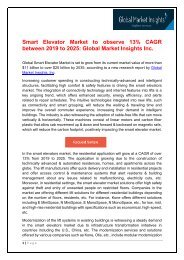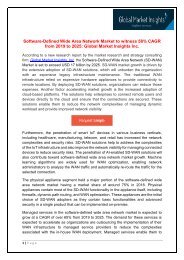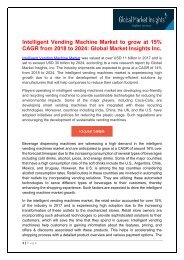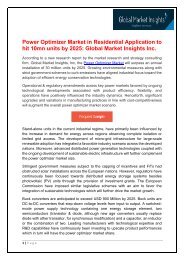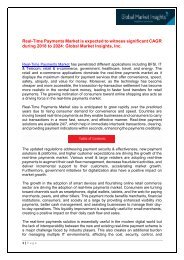PDF-Radio Access Network
Create successful ePaper yourself
Turn your PDF publications into a flip-book with our unique Google optimized e-Paper software.
market share in 2018 and is probable to grow at a commendable pace over the<br />
forecast period.<br />
The lack of proper connectivity and network across the suburban and rural areas has<br />
led to an urgent need for the deployment of small cell connectivity systems. Evidently,<br />
the traditional LTE systems have been proven to be highly expensive and are complex<br />
due to unending requirements by the mobile operators. On account of the requirement<br />
for efficient communication, the demand for RAN solutions is exponentially mounting<br />
in these regions. The reason for considering small cells over macrocells as base<br />
stations for cellular network is the potential of innumerable small cells to be positioned<br />
rapidly over a large area as compared to other base stations. The placement of large<br />
volumes of small cells in the suburban and rural regions would allow the segment to<br />
depict a CAGR of 6 per cent through the projected timeframe.<br />
Notably, Asia-Pacific would be one of the rapidly evolving regions in the radio access<br />
network market with an anticipated growth rate of approximately 8 per cent through<br />
2025. The emergence and high penetration of 5G cellular networks across the region,<br />
chiefly led by India and China, will act as a primary driver for the regional RAN industry<br />
growth. According to credible sources, India has securely held a prominent position in<br />
the global market on the grounds of sales of more than 40 million smartphones during<br />
the third quarter of 2017. Evidently, several industry majors are building up alliance<br />
with other technology companies to advance the innovative radio access solutions. A<br />
2 | P a g e


